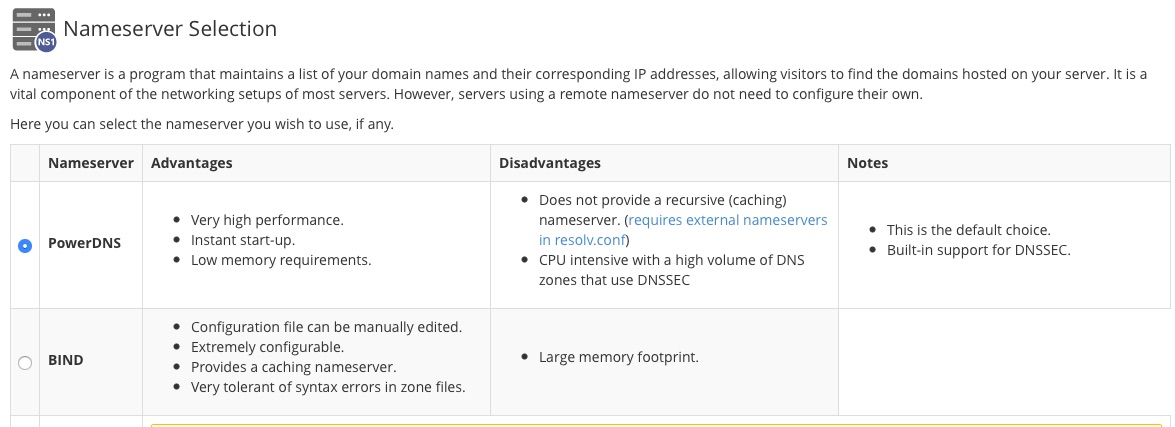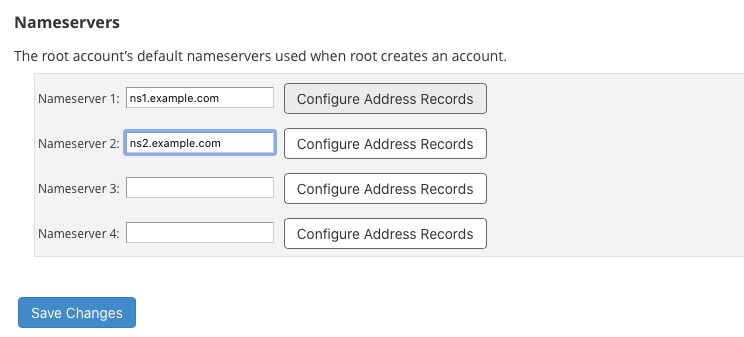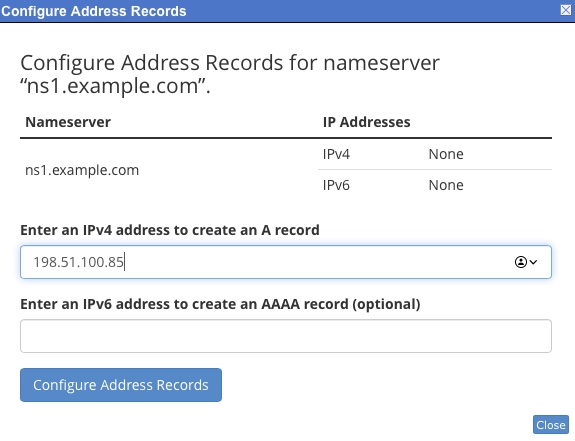Is Either Not A Registered Domain Or You Canã¢â‚¬â„¢t Connect To The Root Nameservers.
The domain name system (DNS) is fiendishly complicated, and managing the nameservers that power information technology can exist perplexing. Server administrators know how frustrating information technology is to change DNS configurations and patiently wait for them to propagate, only to notice out something went wrong and the site is still unreachable.
You'll exist happy to hear that cPanel & WHM makes it super piece of cake to manage domains and even a private nameserver. In this commodity, we're going to explore some essential DNS concepts and then show yous how to configure a custom server with cPanel.
Before we wade into the deep end, let's brand sure we're on the same folio with a couple of terms:
- Domain names are the spider web address you type into your browser. Businesses use domain names to promote their sites. We all know what they look similar, a series of messages and numbers separated by periods catastrophe with what'southward called a top-level domain. For example, example.com.
- IP addresses are the unique number the cyberspace uses to road data to its destination. IP stands for Internet Protocol, and at that place are ii common types of IP addresses: IPv4 and IPv6, but we'll stick with IPv4 for simplicity. They expect like this: 198.51.100.85
A website has a name, which is for humans, and an IP address, which is for the machines that route data around the internet.
What is a Nameserver?
Nameservers are the internet's contacts app. When yous want to call someone, y'all search for a proper noun, and the app gives you their number. To put it another way, a contacts app maps names to phone numbers.
A DNS server does the same for the internet, except it maps domain names to IP addresses. The internet's routers and switches don't understand domain names; they piece of work with IPs. When you blazon a web address or click on a link, your browser knows the site'due south name, but information technology has to execute a nameserver lookup to notice out the matching IP address.
Each nameserver is a tiny part of a vast network. The domain name system is a hierarchical organisation of servers that fall into two wide categories: recursive and administrative. The one that knows the mapping between a site's domain name and IP address is its authoritative DNS server; information technology's the definitive source of truth most that domain.
In that location are hundreds of thousands of authoritative nameservers on the cyberspace. How does a browser know which i to ask? That'south the role of recursive nameservers. A browser asks a recursive server, oft hosted by an Internet service provider, to observe the correct IP address, and it asks the residual of the domain name organization.
Recursive servers are an essential component of the domain name system, only we're primarily interested in the authoritative variety because web hosts often manage the administrative nameserver for their client's domains.
What Are DNS Records?
DNS records indicate how domains stand for to IPs or other domains. They are stored in text documents called zone files, and they are the source of the information nameservers utilise to respond to lookup requests. A unmarried tape looks like this:
example.com. IN A 198.51.100.85
There are numerous types of records. In the example, we used an "A tape," which maps a domain to an IP address. Other types include:
- CNAME records, which map one domain name to another. Yous might utilise a CNAME to signal weblog.example.com at example.com instead of having two "A records" for the same IP.
- MX records are Mail Exchanger records. They say where incoming post should be sent.
- NS records indicate which DNS server is authoritative for a domain: ns1.mynameserver.com, for example.
Zone files can contain dozens of record types and other directives, just you will usually just demand to edit these iv, which can be done in the cPanel interface.
How Do I Notice My DNS Records in cPanel?
cPanel creates and manages records in response to changes you brand in the interface, but you can too edit zone files in the Zone Editor, which you volition observe in the Domains section of the cPanel Home page.

In the Zone Editor, it is easy to add, remove, and edit records for domains hosted on the server. Notice the zone you would like to change, and click on Manage.

How Practise I Alter Nameservers in cPanel?
cPanel integrates the PowerDNS nameserver, a high-operation server with low retentivity requirements. PowerDNS is the default, merely you lot tin can besides select Bind if yous need recursive DNS or to edit zone files manually.
There are likewise options to select MyDNS and NSD, but both are deprecated and will be removed from cPanel in the future.
Only server administrators can modify the DNS server. Y'all will find the setting nether Nameserver Pick in the Server Configuration section of the WHM sidebar carte du jour. Yous can also disable the nameserver on this page. We recommend that you lot stick with PowerDNS unless y'all demand features only available in BIND.
How to Configure Custom Nameservers in cPanel
Your server's domains must take an authoritative DNS server. You could employ ane provided past a third party, only you lot can also configure one locally on your cPanel server. A private nameserver lets hosting providers give their customers a branded accost such every bit ns1.mycompany.com.
Another benefit is that you control the domain. If you motility to another server hosting platform, your domain comes as well, and your clients don't take to change their configuration.
cPanel & WHM makes it straightforward to configure a private domain server. The showtime stride is to ensure the nameserver is active in the Nameserver Choice interface mentioned in a higher place.

Side by side, navigate to Basic WebHost Director® Setup in WHM's Server Configuration menu.
At the lesser of the folio, enter ii domain names of your choice. Typically, these are named ns1.mydomain.com and ns2.mydomain.com, where mydomain.com is a domain associated with your server.

Click "Configure Address Records" next to each entry and verify that the IP accost is the same as your cPanel server. This will add the necessary records to the zone file.

Finally, tell your registrar about the DNS server'southward domain names. The process differs depending on the registrar, then you lot should consult their DNS server documentation or How to Set Upward Nameservers in a cPanel & WHM Environment, which includes instructions for diverse registrars and details on how to configure cPanel to use DNS servers hosted on unlike IPs.
After this concluding step, it may take some time until you can utilize your new server. The domain name system is massive, and records accept a while to propagate around the world, but, all being well, you now have a private nameserver that clients can use for their domains.
The domain proper noun organization can be difficult to get your head effectually, but, in most mutual web hosting and server administration scenarios, y'all only need to know a handful of concepts. cPanel & WHM takes intendance of the heavy lifting and then that it's straightforward to manage records and configure a private nameserver that reflects your business and its brand.
Equally always, if you accept any feedback or comments, please let united states of america know. We are here to help in the best ways we can. Y'all'll find the states on Discord, the cPanel forums, and Reddit.
Source: https://blog.cpanel.com/how-to-configure-dns-nameservers-with-cpanel/
Posted by: juarezalloss.blogspot.com


0 Response to "Is Either Not A Registered Domain Or You Canã¢â‚¬â„¢t Connect To The Root Nameservers."
Post a Comment